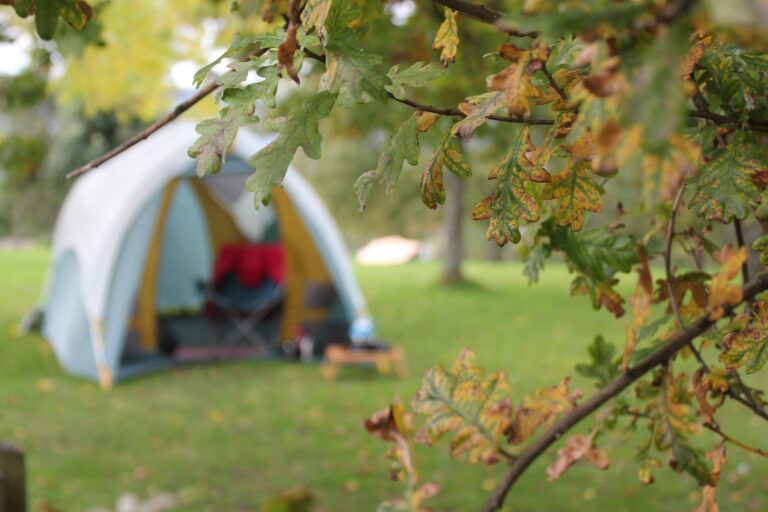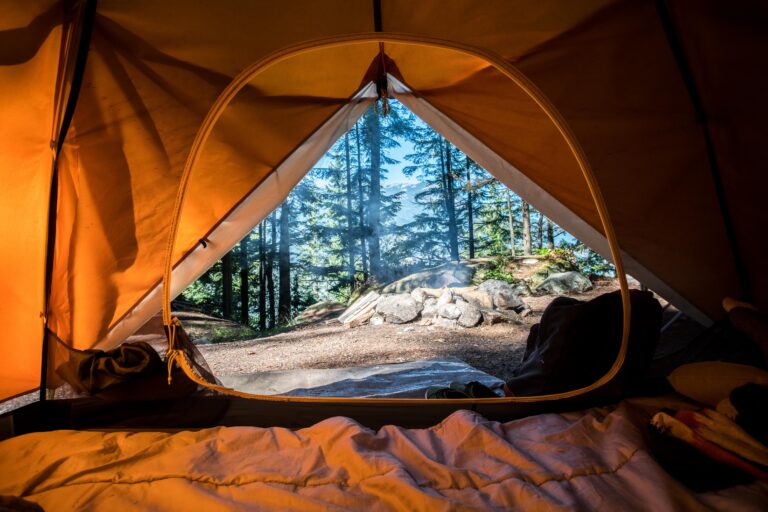How is AI Outdoor Technology Enhancing the Outdoors in 2025?
AI outdoor technology is changing how we experience the outdoors. Read our blog to find out how it can benefit adventurers and the natural world.

Last Updated on 3 May 2025
The fusion of AI trail navigation systems and outdoor recreation has created a technological revolution that’s transforming how we experience nature! What was once considered incompatible – machine learning outdoor applications and wilderness immersion – is evolving into a perfect partnership.
As more people embrace AI outdoor technology gadgets, the tools available will continue to be invaluable companions for hikers, campers, conservationists, and casual outdoor enthusiasts alike.
I’ve tested dozens of these technologies across various terrains and conditions, and I’m excited to share how they’re enhancing safety, accessibility, and environmental conservation while preserving the authentic outdoor experience!
Let’s read on to find out more!

Read more: Best AI Camping Gear for 2025: The Complete Guide
Read more: 7 Best AI Camping Gadgets: The Ultimate Buyer’s Guide in 2025
AI-Enhanced Navigation and Safety Systems
I remember the first time I relied on an AI-powered navigation system during a hiking trip in the Lake District. The weather turned nasty about halfway through our planned route, and I was genuinely concerned we might get into trouble. Traditional maps weren’t helping much as visibility dropped, but this new app I’d downloaded before the trip absolutely saved the day.
Modern GPS AI integration systems have come on leaps and bounds from the clunky devices we used to rely on. Last summer, I was planning a multi-day trek and noticed how my navigation app suggested a slightly longer route that avoided a particularly steep section. At first, I was annoyed thinking it was adding unnecessary distance. Turns out that section had become dangerous after recent rainfall, something the AI had figured out by analysing recent weather data and user reports.

Smartphone trail mapping apps using machine learning for trail identification are particularly impressive, too. On a recent walk in Snowdonia, my app identified a safer alternative path that wasn’t on any official maps. The terrain analysis technology had learned this route from previous hikers’ GPS data and determined it was safer than the marked trail during wet conditions.
Wilderness safety AI devices have absolutely transformed solo adventures for me. I used to be nervous about heading out alone, but my AI outdoor technology wearable doesn’t just track my location – it monitors my movements and can detect if I’ve fallen or stopped moving for an unusual amount of time. There’s something incredibly reassuring about knowing it can automatically alert emergency services if something goes wrong.
Read more: AI Camping Navigation: The Best Guide You Need in 2025
Read more: AI Camping Apps in 2025: The Best Info is All Here to Read
Smart Camping and Outdoor Equipment
The first time outdoor technology changed my perspective was during a camping trip in the Cairngorms when an unexpected storm rolled in. This despite the fact we’d checked the forecast before we left. That was the moment I realised traditional weather forecasting doesn’t always cut it for serious outdoor adventures.
Fast forward to last summer, and I was showing off my portable weather AI station to some sceptical hiking friends. These brilliant little devices use artificial intelligence to analyse local atmospheric conditions and provide forecasts specifically for your immediate area. I’ll never forget their faces when my gadget predicted a two-hour clear window amid a generally wet day – and got it spot on, allowing us to complete our hike without getting soaked!

These portable weather stations collect data like barometric pressure, humidity, temperature gradients, and wind patterns. The AI then processes this information against historical weather data for that specific location. What’s particularly clever is how they learn from their own predictions, becoming more accurate the longer you use them in a specific region.
Smart cooking systems are another piece of AI-enhanced gear that’s transformed my camping experience. I used to be terrible at managing fuel on longer trips, either bringing too much (heavy!) or running dangerously low before the end. The smart cooking system I use now has literally changed how I approach meal planning outdoors.

Smart water filtration systems is another area where AI has quietly revolutionised camping equipment, and is something I invested in last year. Traditional filters work on particle size alone, but these new systems have completely changed how I view sources of water when I’m camping and hiking.
My purifier can detect biological pathogens, chemical pollutants, and even heavy metals. It then adjusts its filtration process accordingly to target those specific threats. Last month, the water safety monitoring system flagged unusual levels of agricultural runoff in what looked like a pristine stream – something my old filter would have missed completely. The peace of mind this gives when drinking from natural water sources is hard to overstate.
Read more: The 7 Best AI Camping Watches Available Now in 2025
Read more: A Complete Guide to Smart Camping Devices to Use in 2025
Sustainable Outdoor Practices Through AI
Solar-powered AI devices have absolutely transformed my longer expeditions. I remember struggling with battery packs and limited power on multi-day trips, constantly worrying about keeping essential devices charged. These new intelligent solar systems have made that anxiety a thing of the past.
Trail maintenance has seen some brilliant AI innovations as well. These smart systems analyse thousands of trail photos and user reports to identify developing problems before they become major issues. The crowd-sourced nature of trail maintenance apps creates a truly collaborative approach to conservation.

Of course, there’s a bit of irony in using technology to connect with nature. My grandad would probably raise an eyebrow at my energy-efficient camping technology and my satellite communication devices! But I’ve seen firsthand how these AI systems are helping preserve the wild places we love by making sustainable practices easier to implement and understand.
Sustainable hiking tools might not be for everyone, but it’s quite empowering to know that with AI outdoor technology my weekend ramble is contributing to the long-term preservation of these special places.
Read more: The Best Guide to AI Camping Weather Prediction Tools in 2025
Read more: 7 Best Affordable AI Camping Gadgets to Buy in 2025
Weather Prediction and Climate Adaptation
These days, I rely on AI weather forecasting tools specifically designed for outdoor activities. The difference is remarkable. Traditional weather apps provide general forecasts for entire regions, but predictive weather AI for hiking takes it to a new level.
Last autumn, I was planning a two-day hike when my AI forecasting tool warned of dangerous wind gusts above 500 metres on my planned route. The regional forecast hadn’t mentioned this at all! The system had analysed historical weather data for that specific area, combined with current atmospheric conditions, and identified a pattern that often led to severe wind tunnelling effects between certain peaks. I adjusted my route accordingly and later heard that several hikers had struggled with those exact conditions.

The microclimates these AI tools can predict still amaze me. During a recent coastal walk, my app accurately forecasted when fog would roll in from the sea and clear again—down to about a 30-minute window. This kind of precision was simply unimaginable just a few years ago.
The integration of weather data with other outdoor AI applications creates powerful synergies. My navigation app now incorporates real-time weather data to suggest route modifications. During a mountain hike last spring, it recommended an alternative path when approaching thunderstorms made my planned ridge walk potentially dangerous. The seamless integration meant I didn’t have to switch between multiple apps while making decisions in challenging conditions.

AI outdoor technology and climate adaptation tools have fundamentally changed my relationship with outdoor spaces. They’ve expanded the range of conditions in which I feel comfortable adventuring and reduced the number of trips cancelled due to weather uncertainty. Most importantly, they’ve enhanced safety by providing information specific enough to make informed decisions rather than general forecasts that may or may not apply to my exact location.
Final Thoughts on AI Outdoor Technology
The integration of AI outdoor technology into outdoor recreation represents a significant advancement in how we explore and appreciate natural environments. As we’ve seen throughout this article, today’s AI outdoor technology is enhancing safety, supporting conservation efforts, and making wilderness experiences more accessible while creating new opportunities for adventure.
These outdoor accessibility AI solutions allow us to connect more meaningfully with nature while minimising our environmental impact. Whether you’re planning your next expedition with backcountry navigation aids or simply enjoying weekend walks in local parks, embracing these smart tools can transform your outdoor experiences now and in the future.
The thoughtful application of climate-adaptive AI equipment in outdoor settings isn’t about replacing authentic wilderness experiences—it’s about enhancing them in ways that benefit both adventurers and the natural world!
What do you think of AI outdoor technology? Will you use any on your next outdoor adventure?
Happy travels!







“I believe some kind of water filtration system should be part of every survival kit, household, or backpack. This one looks top-notch.